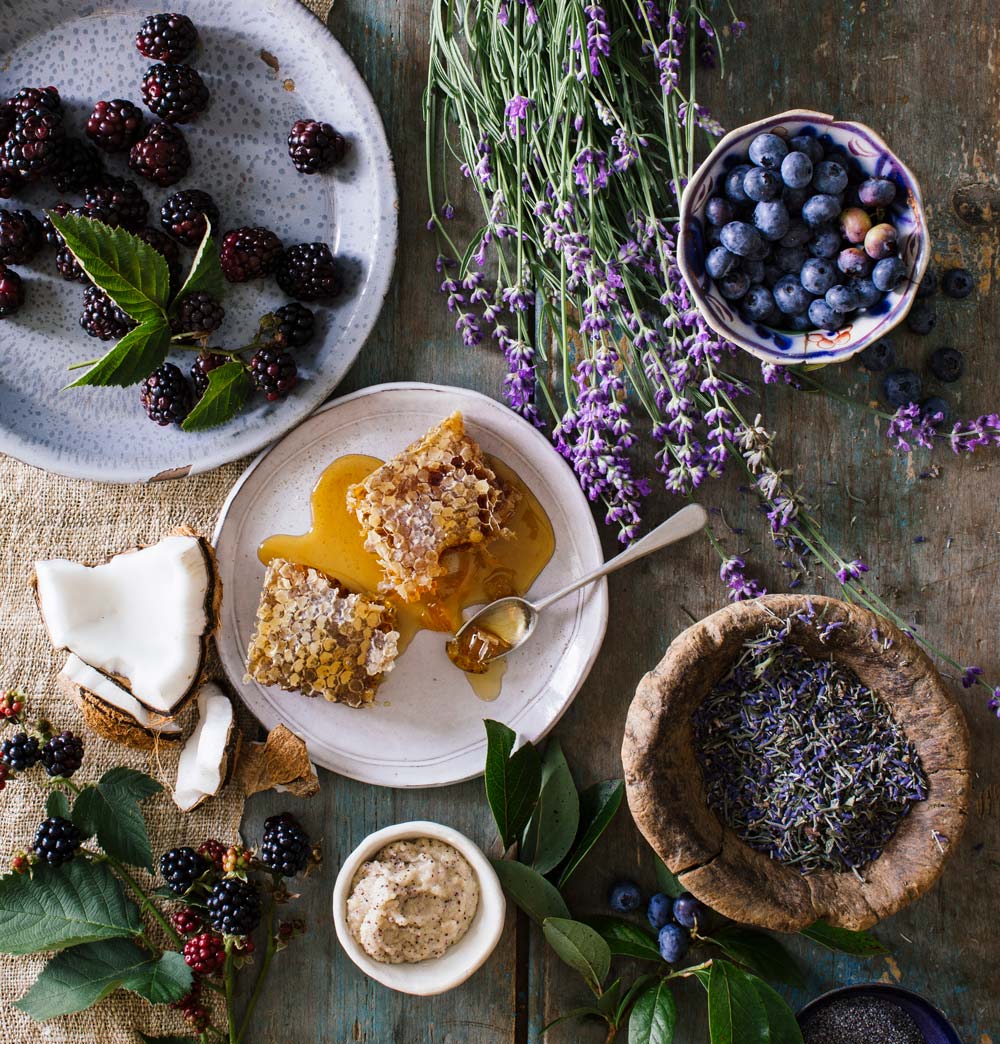Growing lavender in Maryland is surprisingly easy, even if you don't have the ideal conditions. By choosing the right variety for your region, you'll be able to enjoy an abundance of this fragrant perennial herb for years to come. Whenever we come across a plant that doesn't thrive, we simply replace it with a new one and take note of what works and what doesn't.

There are over 200 varieties of Lavender.
Lavandula (common name Lavender) is a genus of 39 species of flowering plants in the mint family, Lamiaceae. Natively, lavender is found in Provence, on the Canary Islands, Cape Verde, southern Europe across to northern and eastern Africa, the Mediterranean, southwest Asia to southeast India. Many members of this genus are grown as domesticated for garden and landscape use, for use as culinary herbs, and also commercially for the extraction of their essential oils.
An arid climate is ideal for growing lavender; in the Mediterranean, where the weather is sunny and dry, and in the rocky soil of English gardens. Two varieties that are hardy enough to grow anywhere are English Lavender (Lavandula angustifolia), "Hidcote Blue," and "Munstead." It's always an adventure to try new varieties and see what grows the best with the least amount of time and effort.

Lavender on the Eastern Shore of Maryland
Our farm is located on the Eastern Shore of Maryland. Over the last ten years, we have tried several different lavender varieties and learned that some do much better than others. Phenomenal, for example, does not do well in our climate or where we have placed it. Grosso X, however, does phenomenally well.
Considerations when growing lavender.
First, consider the growing conditions. Lavender loves dry, well-drained soil and full sun. As for soil type, if you want to grow your lavender for its essential oils, it is recommended that the soil is lean, chalky, and mostly alkaline. This combination minimizes the risk of root rot from dampness.
If this is your first time growing lavender, the following do well in tight spaces: Fringed Lavender (L. Dentata) and French lavender are good for zones 8-9. Spanish lavender is preferred in humid areas and environments like ours here in Maryland.
We've experienced many ups and downs growing lavender on the Eastern Shore, so we are always looking for new and different varieties to add to our fields.
Flowers are produced on whorls held on spikes rising above the plant's base, which are branched in some species. Some species produce colored bracts at the apices.

The flowers may be blue, violet, or lilac
In the wild species, the flowers are occasionally blackish-purple or yellowish. The calyx is tubular. The corolla is also tubular, usually with five lobes (the upper lip is often cleft, and the lower lip has two clefts).
Lavender does not like wet feet.
Though the plant is extremely tough and can survive a severe drought, it doesn't do well in humid summers and severe winters; you can easily lose a plant or two in this weather. In addition, it takes a while for the plant to become established. The plant is very sensitive in its first few years and requires a few handfuls of compost and fertilizer.
Damp soil kills lavender more than any other condition; the soil should be very well-drained. Because in winter months, the soil freezes and thaws continuously, a thick layer of mulch will help keep the plant’s roots dry.
We find that planting on mounds helps drain water away from the root system, but the truth is in Maryland, the humidity and the recent rise in the rainy season make growing lavender more challenging than it has been.
Lavender should be planted in full sun.

Growing Lavender in containers
Lavender likes having its roots in a tight space. Pots should measure no more than an inch larger than the root ball; if the pot is much larger, there may be a problem with dampness. Make sure there is plenty of room for drainage. Be sure there’s no standing water in the container.
For drainage in containers
Add some pebbles or rocks to the pot's bottom layer, which will keep excess water away from the roots. You can also use a soilless mix for your plants, mulch, and other mixed potting substances.
The best soil for growing lavender is gritty or sandy soil with pH of 6.0 and 8.0. Lavender requires full sun, needing eight or more hours of direct sunlight daily.

Not all lavender is ideal for growing in pots.
If you are searching for the best lavender for small containers, are; Nana Alba (L. Angustifolia), Irene Doyle (L. Angustifolia), Blue Cushion (L. Angustifolia), and Lavenite Petite (L. Angustifolia). You can grow Hidcote or Munstead in containers, but repotting every 1-2 years is best for optimal growth and blooming.
We make an event out of harvesting lavender each year.
It's all hands on deck when the time is right. What's nice after ten years is that different plants at different locations on the farm bloom at different times. It gives us an opportunity to harvest plants for different purposes. If you are harvesting your plants for drying, harvest when the first corollas (or buds) have already opened to when about half of the corollas have bloomed but not yet withered. If you’re harvesting lavender for a bouquet, harvest whenever you see fit, but to get more bang out of your plants, cut when at least half has bloomed, and half is still dormant.
There are many ways to use lavender other than a great all-natural air freshener, beautiful cut plant, and honey bee attractant. Lavender is often used as a flavor infused into baked goods and makes a great pairing with chocolate! Another common and delicious use is blending it into black or green tea teas. Known for its calming properties, it is often featured in shower gels and soaps.
For an excellent moth repellent, make a few satchels of dried lavender and stash them in your closet. Your closet will smell heavenly, and moths won’t bother your fine fabrics!
Pruning lavender is not at all difficult. Each variety may have different requirements.
The best time for pruning is once flowering is over for us, which is in late June. This often results in two blooms per year during a good growing season.
What are your favorite types of lavender? What types have you had success growing? Let us know!
More on Lavender:
Harvesting lavender has become an event on Chesterhaven Beach Farm.
Recipes with Lavender
Infusing Honey with Lavender
Honey Lollipops with Crushed Lavender



